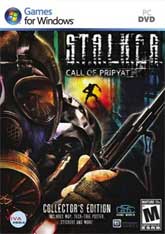 Review by Steerpike
Review by Steerpike
S.T.A.L.K.E.R.: Call of Pripyat
Developer GSC Game World
Publisher BitComposer (U.S.); Cenega (Europe)
Released Feb 3, 2010 (U.S.); Oct 2, 2009 (CIS)
Available for Windows
Time Played Finished
Verdict:  5/5 Gold Star
5/5 Gold Star
“Call of Pripyat isn’t perfect either; but as a third-generation evolution of an idea so blindingly ambitious, it sure as hell doesn’t disappoint.“
![]()
Tuesday, 6:24 am. I slog alone through gloomy, marshy grassland. It’s been raining since I got up, and the sky threatens a cheerless day. Droplets spatter on my gas mask lenses. Boots soaked through. My right shoulder aches from holding the rifle in position; my fingers are so frozen I might not be able to pull trigger if I tried. I feel a little nauseous; since last night. Radiation sickness. Nothing serious, a few Curies. It will go away. My stomach also didn’t appreciate this morning’s breakfast, a pink log unpromisingly named “diet sausage” by its seller. I’m injured, too – a wild boar tusked me out by the farmstead this morning. A deep gash just to the left of my groin. I haven’t stopped the bleeding but I have gotten it to the point where I’m pretty sure my body is making blood faster than I’m losing it.
The Longest Mile
If you feel, sometimes, that GSC Game World’s S.T.A.L.K.E.R. series has been around forever, or at least as long as antediluvian things like, you know, the Moon, you could be forgiven. Announced in 2000, it suffered through a seemingly endless array of troubles, delays, buck-passes and embarrassment. The initial installment, Shadow of Chernobyl, was really a phenomenal game – broken in many respects, but a revelation. The subsequent Clear Sky was considered a misstep, but don’t judge it too harshly. It brought a lot of innovations to the series, it just didn’t always execute them well.
And here we are with Call of Pripyat, the third and probably last installment we’ll see for a while, if not ever. Where Shadow of Chernobyl was moodily terrifying and Clear Sky was atmospherically desperate and crowded, Call of Pripyat is introspective and bleak, a lonely and isolating experience that brings to mind the best moments of gloom from both of the earlier games while greatly improving the experience. Call of Pripyat is not game of the year material, and by this third installment even diehard STALKER fans are beginning to feel the edge of their lust for more Zone grow dull. But it is here, in this third iteration, that GSC Game World finally got it right, achieving what the mighty Ubisoft, with all its money and talent, couldn’t accomplish with Far Cry 2. Call of Pripyat is a genuinely riveting open-world shooter that bears all the signs of handcrafting where most open world games revel in their sameness; an RPG without stats, a shooter where hours may pass between incidents of shooting.
This is not the old GSC Game World, with their incomprehensible translations, their litany of broken quests and storylines, their Nobel-worthy ideas that sing in theory but fail in practice. No. This is the New Hotness, the fiery fuel-injected GSC Game World, where everything works, where they take advantage of their QA-less past to brilliantly put you into situations where you believe – for days – that it’s just another broken quest, just another nonsensical sidestory, just another bug. Not this time. Call of Pripyat is a winner.
Ground Control to Major Tom
There was a moment, outside the ruins of Chernobyl Nuclear Power Plant at the end of Shadow of Chernobyl, when it seemed that the game’s apocalyptic undertones had burst through the surface, showering the entire universe with doom. Gamers who survived to experience that aorta-rending confrontation would never forget it, as nearly every living character in and around the Zone – the surviving Stalkers of all factions, the radiation-addled Monolith troopers, the Ukrainian military, the science teams, even the lowly bandits – converged on the power plant grounds in a lunatic gunfight that would determine the fates of all.
The Wish Granter, the fabled final artifact, supposedly lurked inside the plant. And according to the legend, whoever reached it first got a wish. Lust for this power turned brother against brother. The grounds became an abbatoir. Ukrainian security forces, long desperate to eliminate the plague of Stalkers who enter the Zone illegally to hunt for precious artifacts in the radiation- and anomaly-tainted region swooped in with tanks and helicopters, shelling the area relentlessly, intent on putting a stop to this incursion once and for all. As grenades popped and guns blazed and men died, Reactor Four crouched beneath the slowly crumbling Object Shelter and quietly hated; the malice of a place that had become a thing. A sentient power plant, a diseased mind inside the diseased body that is Chernobyl’s forbidden Zone of Exclusion. All its efforts to keep humans away had failed, and so the angry reactor prepared its final assault: a blowout, a storm of radiation so unnatural that time and space would warp before it. An emission to sweep clean the entire area, to reshape the Zone completely. As the sky drenched itself in blood and the sun shut off and the earth trembled before the fury of the power plant’s fiery inhalation, as Ukrainian helicopters pummeled the ground-based Stalkers with rocket fire and Monolith troops shot wildly at everything that moved, a lone Stalker named Strelok darted across the landscape, dodging explosions, bullets singing by. Two paths were open to him. His destiny – but not the Zone’s – hung in the balance.
In the final moments of Shadow of Chernobyl, during that craziness outside the power plant, five attack helicopters from the Ukrainian security services went down. Unable to establish contact with the choppers or determine whether any crew members had survived, the military orders Major Alexander Degtyarev into the Zone, disguised as a Stalker. He is to investigate the crash sites, look for survivors, and figure out what happened outside the power plant. His undercover mission – and yours – will lead him through a Zone profoundly changed by the events outside the power plant, and into danger and revelation beyond what anyone could have possibly expected. This is Call of Pripyat.
Liquidation
Journal, Monday, 4:50 pm. The area around the Jupiter radio factory has a serious wild dog problem, to the degree that the annoying merchant at Yanov Station is running low on buckshot. I asked him where I could find more, and he shrugged and said “not heeeerrree, dude!” I can’t stand his faux-cheeriness, his stupid Hawaiian shirt, the fact that he never has what I need. I might punch him in the throat. Irony: there is a fortune in the Zone – I’ve made more Rubles in a week than I usually make in a year – but there’s nothing to spend it on. Stalkers just amass their mountains of cash, hold onto them, and die. They don’t live here, they just… exist.
Overall Pripyat will be very familiar to anyone who has visited the Zone before. The bleak atmosphere and general structure – long periods of slow exploration punctuated by wild, often terrifying firefights – remains the same. A hybrid of shooter and RPG best compared to System Shock or Deus Ex, this third installment sees a refinement in play style but no unexpected diversions from a model that has proven popular.
It doesn’t play much differently than its predecessors, but it includes an immensity of under-the-hood changes ranging from small but important all the way up to gallumphingly noticeable. Everything that was good about Shadow of Chernobyl and everything that was good about Clear Sky have been rolled into this tidy package, with much of the bad removed.
One thing that’s evident is that GSC could have – and probably would have – spent another five years developing Shadow of Chernobyl if their publisher hadn’t started cracking the whip. Each of the games has been an evolutionary improvement over the last (with some missteps thrown in there for good measure). Last summer they released the fabled STALKER Build 1934, a circa 2005 holy-shit-is-that-what-they-were-trying-to-do-no-wonder-it-took-them-seven-years alpha. 1934 tore the secrecy off GSC Game World’s true intentions and exposed us to a Zone as they originally envisioned it: three times the size of the one in Shadow, with no loading, no fences, no boundaries, no invisible walls, no bottlenecks, no limitations on where you could go, completely and totally under the control of an omnipotent AI. To call Build 1934 “ambitious” is to do it a grave injustice; developers with ten times the staff of GSC and a hundred times the funding wouldn’t have dared set their sights on a technical achievement of that magnitude. 1934 is surprisingly playable, assuming you can read and speak Ukrainian, don’t mind using a hex editor to define your game parameters, and are willing to tolerate gigantic holes and functionality issues.
Anyway, if 1934 is representative of what STALKER was “supposed” to be, Call of Pripyat is representative of a third-generation evolution of the more realistic bar set by Shadow of Chernobyl. Veterans of the series will see a lot of things working here that never worked correctly before.
A-Life Artificial Intelligence, for example, is on, period. In the last two games it was either off or didn’t come on until after you’d completed all objectives in a region. That latter was to prevent the frankly incredible AI from breaking the game; the level of autonomy A-Life allowed meant that necessary characters could die by accident, off-camera, or do things that the player was supposed to do. But of course if the AI came on after you’d done everything in a region there was never any reason to return so you rarely saw it in action.
Seeing A-Life as it was meant to be seen is incredible. The first time you watch a pack of wild dogs take down a boar and drag it into the reeds to feast; or Stalkers cautiously approaching an anomaly in search of artifacts, consulting their detectors and moving forward by inches; or a hunting party heading out at dawn to track down some game; it’s just unlike anything you’ve witnessed in game intelligence before. Every natural interaction is controlled by A-Life, and they’re not scripted set-pieces for your benefit. The Zone is a living world, and living things in it just follow their routines and behaviors, whether you’re around to see it or not. This leads to an interesting change: A-Life is a procedural AI designed to behave realistically according to needs hierarchies and self-preservation instincts. How does that affect you as a character? Well, humans are a lot less aggressive, for one thing. Wild animals and mutants will still come after you, particularly if you’re alone and they’re hungry, but other Stalkers tend to wave and leave it at that. The chance of someone sniping at you for no other reason than you’re there is pretty low. Indeed, until the end of the game when those crazy Monolith bastards turn up, you spend most of your ammunition on fauna rather than men.
Here’s A-Life: other Stalkers loot corpses now. They even leave behind stuff they’re not interested in. How awesome is that? I once saw a pair of bandits dart into a train car to hide when a Duty patrol came by, then slowly ease out once the coast was clear. I saw a pair of dogs harry a Bloodsucker, driving it into a shallow pond where its invisibility would be useless. I saw Stalker groups move autonomously and behave realistically: stopping for breaks, camping at night (or, more often, retreating to a safe location), and a million other little behaviors that turn the Zone residents into lifelike entities. Nocturnal creatures actually do only come out at night now. Stalkers avoid areas believed to be haunted or irradiated. Members of warring factions Duty and Freedom will exchange friendly potshots when they cross paths, but don’t always turn the event into a bloodbath. And Stalker gangs have actual activities that they actually complete.
Journal: Monday, 1:22 pm. It’s been a while since I had to pass an obstacle course in Basic, and I’ve never had to pass one where a single misstep meant death. You can see where the anomaly took out the bridge – the convoy was right there and never had a chance. The lead truck got creamed, and the rest tumbled into the gully as the bridge came down. The whole area shimmers with anomalies. How am I supposed to get down there?
On the subject of gangs, it’s ironic that it took three games for GSC to recognize that you should have the option of forming one yourself. Strelok’s gang, and the individual personalities of which it was comprised, was such an important facet of Shadow of Chernobyl, and so many small gangs dotted the Stalker social landscape, that the opportunity to finally put together a gang of your own is really rewarding. Not only that, you’re expected to recruit from the various Stalkers you’ve known and befriended, meaning if you’ve been an asshole you’re going to get different people than if you’ve been a nice guy. I loved the couple of hours I spent tracking down old friends and recruiting them, and I wish the game had included more time spent with your gang.
We’re Walking… We’re Walking…
Smaller gameplay improvements shine the overall experience. I’ve often complained that you lose stamina too quickly in the STALKER games, while regaining it too slowly – and then only when you’re standing still. Honestly, if you’ve sprinted for a while and you’re out of breath, you can still walk while regaining some juice. And they’ve finally implemented that with Call of Pripyat. You still lose stamina way too fast, but regaining it is less of an issue. Plus, stamina plays a greater role in your activities: you aim more poorly when tired, for example, and can’t throw grenades as far.
Call of Pripyat is also friendlier to explorers. Small anomalies still pepper the region, though now the nearly-invisible deathtraps move, as was always intended but only implemented in this installment. Large anomalies are landscape-altering phenomena, tremendous rents in the earth or bizarre, ominous confections of threatening landscape. Valuable artifacts are most often found in these big anomalies, which are named on your map, but visiting them without sufficient protection is usually a death sentence. What’s more, blowouts from the power plant can actually reset these areas, causing anomalies to throw new artifacts and encouraging treasure hunters to revisit territories they’ve already cleared out. Of course, the wonderfully AI-controlled other Stalkers will do the same, so it’s not uncommon to find quite a crowd checking out a local anomaly after a blowout.
You still have to walk everywhere – vehicles were originally implemented and can be found in the 1934 Build, but at this point they’d mess up too many other aspects of play. This can lead to boring segments where you’re retracing your steps a lot, particularly at the beginning of the game, when every nasty encounter sends you scampering back to a Stalker camp for medical attention. It’s a small complaint, though, since you do now regain stamina while walking and things aren’t that far apart. The biggest issue with having to walk back to camp before completing your goal isn’t the extra walking, but the fear that you’ll be eaten by something before you make it.
Journal: Saturday, noon. Another blowout this morning. I barely made it, and nearly died for the attempt. The sky was blood-red and the ground was literally dancing underneath my feet as I crashed into a squalid back-room at what I think was once an auto repair shop. I was so winded that it took a moment to realize that I wasn’t alone: the whole room was packed with sinister fellows who, by the smell and the prominence of black in their wardrobes, could only have been bandits. Looking down the barrels of probably a dozen taped-together AKs and shotguns, I was at a loss for words. Then the leader spoke up. “Hey,” he said.
Other improvements include the ability to sleep at night and take advantage of free medical attention in camps, both of which enhance the experience greatly. It’s very dark in the Zone at night, and even the best nightvision rigs don’t do much to pierce the gloom. New mutants like the terrifying Chimera and just-run-away Burer, both creatures that prefer to prowl at night, give even the heartiest Stalkers reason to cuddle up on a piss-stained mattress rather than continue their stalkings in the dark. And the fact that medical attention is free in camp greatly reduces the early grind, where you’re struggling for every Ruble and frustrated by the need to spend some on meds rather than bullets.
Finally, the equipment interface has received a much-needed improvement: no longer do you have a “primary” weapon that must be a rifle and a “secondary” weapon that must be a pistol. Anyone who’s played STALKER knows that the ideal setup is a shotgun for close encounters and a sniper or assault rifle for everything else; that’s possible now since weapon slots are just “one” and “two.” What goes into each slot is your call. I typically keep a shotgun in one and a high-powered sniper rifle in the other, with an assault rifle in my backpack. And when heavy artillery is needed, it’s nice to keep an RPG launcher as a primary weapon and a rifle as a secondary, rather than frantically flipping through your inventory to switch between big guns.
Radioactive Particle (Systems)
The team at GSC have been spending their time well. Call of Pripyat performed very admirably on my system (specs below). DirectX 11 graphics are an option for those with $700 video cards, highlighting the eastern European love of new technology. Load times are drastically reduced, crashes and bugs are practically nonexistent, and the enormity of the world shows that GSC’s gotten very comfortable with X-Ray… just in time for it to retire.
Yeah, I hate to say it, but the X-Ray engine is showing its age and won’t do for another STALKER game, assuming there’s to be one. Back in 2007, X-Ray provided graphical quality demonstrably similar to that of Half Life 2. Clear Sky and now Call of Pripyat feature a cartload of improvements, but the core engine remains the same and doesn’t cut it in 2010. X-Ray was never a very stable or well-optimized renderer; nowadays even GSC agrees that developing a proprietary engine for STALKER was a stupid thing to do. While the X-Ray engine is great for creating those desolate, lonely environments that made STALKER famous, it’s not the engine but the art direction that allows for this. I don’t know what GSC has planned for the codebase, but it’s time to let it go.
Journal: Thursday, 8:01 am. Zulu told me that I’ll need a gang if I want to get to Pripyat. Who? I want people I can trust, but at the same time, Stalkers don’t seem to share the follow-orders attitude of the military. I’m afraid if I’m in charge of a gang I’ll start barking out orders like they’re soldiers, and then my cover will be blown. Zulu himself already said he’d go. He seems nice enough, but I need at least three more guys. I suppose I could just ask Duty for some men, but their leader’s been a little chilly with me since that discovery at the Ventilation Complex.
As I mentioned, A-Life artificial intelligence is quite astounding. But A-Life only manages general interactions between AIs and the world. Pripyat’s combat AI, sadly, bears a more resemblance to Clear Sky’s than to the awesome tactical brain of Shadow. Humans don’t relocate or flank the way they did. And despite the new stealth system, they see you far too easily, and their aim is spot-on even in darkness or other obscuring conditions. Obnoxious grenade spam has been massively toned down (though the confusing grenade indicator is unchanged), but in general the tactical AI doesn’t impress. What I don’t understand is why they changed the AI from what was present in the very first STALKER game. It was perfect the way it was.
I need to reiterate the stability general buglessness of Pripyat. Yes, there are bugs, and yes, it did crash out for me once or twice. But it’s easily as stable as most top-shelf releases, and miles better than anything we’ve ever seen from GSC Game World. Moreover, they finally seem to have brought on an actual English speaker to translate the script. Not only does Pripyat do away with the incomprehensibility of the previous installments, it presents clever, colloquial dialogue that does a great job of making you not feel like you’re in a localized game. They also fixed the humor – many gamers complained about the sophomoric and out-of-place jokes that peppered Clear Sky, that seemed more like stupid geek humor and inept Monty Python plagiarism. Pripyat, to its great credit, centers most of its humor around vodka.
Heed the Call
One of the key complaints leveled against Clear Sky was the fact that the vast majority of the game took place in regions you’d already visited in Shadow of Chernobyl. You experienced them from a different perspective, of course, but assuming you’d finished the first game you knew your way around and as such the sense of exploration was heavily diluted. Some people took this to mean that GSC had mapped pretty much the entire Exclusion Zone and there wasn’t anything left to see.
But of course this really isn’t the case. First of all, GSC took quite a few liberties with the real-world Zone in the interest of crafting their game; second, while the Exclusion Zone is officially only about 35 square kilometers, it’s not a symmetrical blob with the power plant at the center, and it’s not a static region. Wind patterns in the wake of the 1986 disaster scattered radioactive soot far and wide, so the Zone is really a splotchy mishmash of land spread around Ukraine and Belarus, with restricted areas changing based on current weather and the mood of the people who make such decisions. There’s a lot of Zone to work with provided you’re willing to be liberal in your interpretation of what actually qualifies, and GSC is able to do that because the STALKER fiction posits a second explosion at the power plant that dramatically altered the scale and personality of the Exclusion Zone.
Journal: Tuesday, 5:43 pm. I went to meet Grouse at the Dock Cranes like Beard told me to, but when I arrived Grouse wasn’t there. I nosed around for a good thirty minutes with no luck. Just as it was getting dark a couple of bandits came out of the shadows and started a fire for dinner. Grouse doesn’t seem like the type who’d be taken out by bandits, and they claim they’ve never heard of him, but nothing changes the fact that he’s not here. Could something have happened to him? If so, who do I tell?
This time around you’ll be visiting three entirely new regions. Zaton is swampy and thoroughly unpleasant; Jupiter’s sprawling industrial complex and railway stations are home to more wild dogs and frightening mutants than you can shake a stick at, and the abandoned city of Pripyat itself is much more fully realized in this installment than it was in Shadow of Chernobyl. Pripyat’s not an easy place to get to, and once you’re there it’s a pain to leave. Still, you will find yourself doing a fair bit of circuitous wandering in Call of Pripyat, as Degtyarev has to put together a puzzle whose pieces have been scattered across the entire territory. Far from being an irritant, Call of Pripyat’s world feels much more cohesive than those of its predecessors, and dramatically improved region load times make transitions bearable.
Plenty of people snap up new STALKER games just to re-experience that gloomy, haunted Zone that GSC has expertly crafted. There’s no game world quite like that in STALKER, no interactive experience that so effectively makes you feel a place. In Pripyat, since so many other complaints have been corrected or reduced, you’re ever more able to throw yourself into the immersive world and forget that you’re not in the Zone at all.–
How Many Stalks Could a Stalker Stalk, if a Stalker Could Stalk Stalks?
I’ve been asked by more than one soul what’s going to happen with the STALKER series, as though I get letters from the development team from time to time. I don’t know. I will say this: I’m somewhat STALKERed out at this point, though that’s likely more due to professional commitments associated with the series than any declining interest. I can only imagine that the folks at GSC are much more exhausted by the franchise. Offhand, I’d be surprised if they announce that another STALKER game will be their next project. If I were them I’d want a break.
Journal: Sunday, 11:45 pm. Apparently Strelok went into several of these labs all alone. God knows what he encountered in some of them. I know that Ghost was killed in one. Ghost was Strelok’s best friend. I can’t imagine what it would be like, finding your friend’s body down in the darkness. Looking at this stairway gives me the shivers. It’ll be pitch black in there no matter what time it is topside, but somehow the knowledge that I’ll be going down there at night makes it all the more frightening.
But I doubt that Call of Pripyat is the last of the franchise. While it has only been moderately successful in the west, STALKER is a money-printer in Ukraine, Germany, and Russia, to the point of novels and energy drinks and weekend-long STALKER-fests with loud rock music. It has made GSC Game World a considerable fortune and they don’t seem to be the type that murders golden geese. If they could find a reliable publisher in the west, they’d likely get an even larger financial boost, though right now they’re doing very well on Steam.
If there is another STALKER game, I’d hazard that it will be a proper STALKER 2, and may reboot the fiction of the franchise. Some wags have rumorized the possibility that GSC will license Cry3 technology from German developer CryTek for any upcoming STALKER game. It’s a logical choice in many ways; the Cry Engine has always been great at modeling immense outdoor regions, and Cry3 promises to be the most advanced graphics engine on the market for many years. Use of this codebase would also allow the STALKER franchise to reach consoles: GSC is now a licensed 360 developer, and would surely like to attack this new market. That’s another reason for rebooting the fiction and polishing off the nonsensicalities that have so long plagued it. I certainly doubt that GSC will attempt to develop another proprietary engine. But it’s important to bear in mind that GSC itself has confirmed nothing – not about tech, nor about future STALKER possibilities, aside from an offhand remark that STALKER 2 would be cool.
The entire STALKER series has been mired in potential from its earliest days. Did it always live up to that potential? Heavens no. Flaws and missteps have hounded the series since its inception. And Call of Pripyat isn’t perfect either; but as a third-generation evolution of an idea so blindingly ambitious, it sure as hell doesn’t disappoint.
![]()
Website: http://www.stalker-game.com/
Minimum System Requirements (PC): Pentium 4 2.0GHz or equivalent, 512 MB RAM, 128MB DX8 video (Don’t bother if the above is the best your system can muster. Test your PC with the free benchmark here)
Reviewer’s System: Core 2 Quad Q9450, 4GB RAM, 512MB Radeon 4870, Windows 7 x64


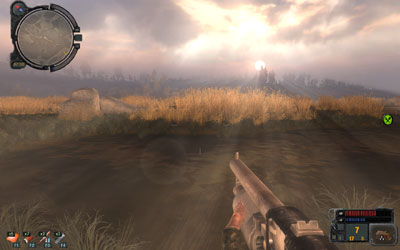
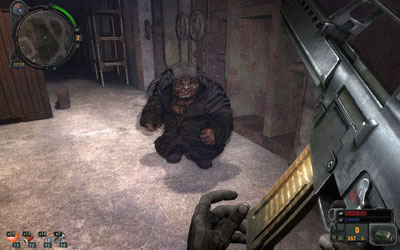
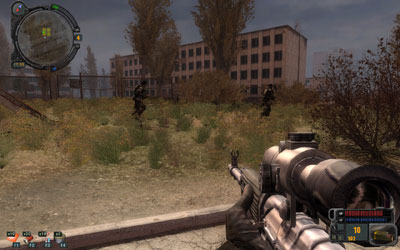
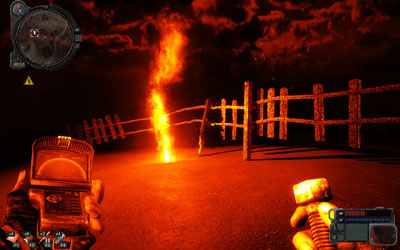
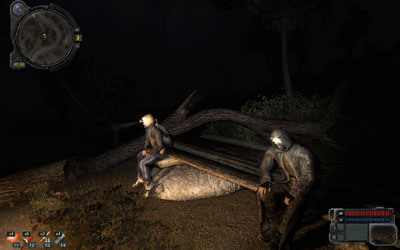
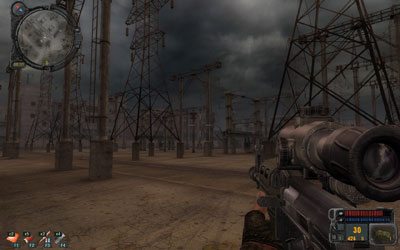

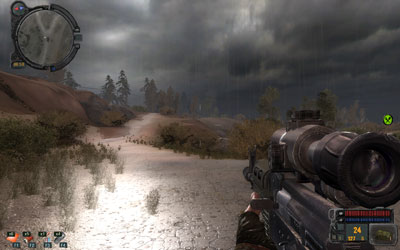
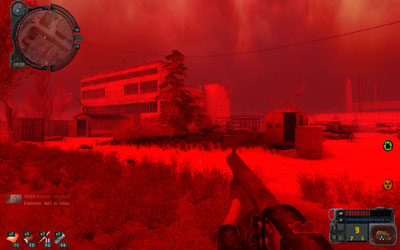
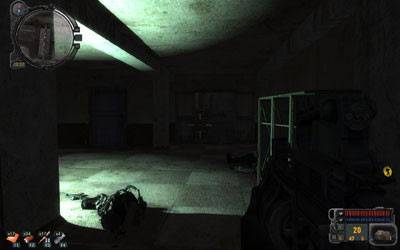
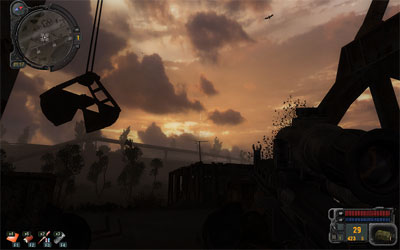
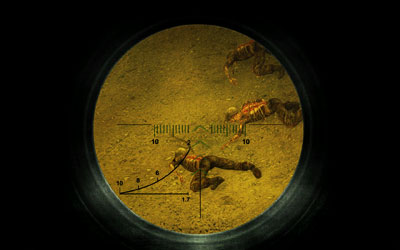
What a wonderful review Matt 🙂 I never purchased Clear Sky, a mixture of having many games to play at the time, and it’s odd bag of review scores. This does however sound very appealing though, Stalker is an amazing franchise and I think using the Cry engine would be a very good thing. Stunning graphcs, vehicles and huge land mass, my only concern being that Crysis’ AI was awful!
Top stuff bud, hope your better too 🙂
This is just the review I need as I wearily return to work.
Pre-emptive yeah: yeah!!!
Great to hear your thoughts Steerpike.
I did a lot of retreading in SoC so I witnessed quite a few instances of the A-life intelligence doing its thing and it was never short of exhilarating to see a game not treat you as the center of its world; watching its inhabitants fight each other totally independent of you was fascinating. Hearing that CoP has A-life working fully gets me really excited. The incidental stuff in the Stalker games is what make them.
I got wind of a new Clear Sky mod called ‘Complete Clear Sky’ that clears up a slew of bugs and tightens up the experience which I might try out. I intend on finishing it before playing CoP you see.
Great review Steerpike.
I agree about the sense of place this series gives you. Most games fade from memory pretty fast but I think I could still sketch a map of the Zone solely from what of the first game I managed to complete. There is something about the setting that makes you respond as if to a real place. I remember the Zone much like I remember, say a trip down the California coast, as a series of real places connected by long periods of blurred boredom and odd encounters with locals…
If they ever come out with another STALKER with the Cry3 engine that might help to break this game in the US.
Great review! You have a hell of a feel for the series, and for the story that surrounds it. I have to admit that when I was taking the Wish Granter, I wasn’t really appreciating the lovely symmetry of everything descending on it at once as the morality tale it is–I mostly wanted to not get shot, and to make it to the damn thing.
I’m sad to hear that the combat AI isn’t improved, though. I hate the “we’ll just make them crack shots” method of making a game hard. Besides being just annoying, it makes it harder to lose yourself in the experience. If every bandit can ventilate you from 200 yards, then why are military troops scary? And how tough am I, since it takes me a whole clip?
Still, it sounds great. I’ll probably pick this one up soon.
Thanks, all.
It’s down to $19.99 on Steam and while the combat AI is annoying, you fight humans so rarely in Call of Pripyat that it’s kind of a non-issue. And some of the combats are intentionally set-piece – laying ambushes, working with a faction or gang to bring down another, etc.
This game sounds super sweet. I think the first Stalker is coming up in my que. I believe my post-Awakenings “que” is currently Portal, BioShock and then S.T.A.L.K.E.R.
Maybe it will be Pripyat after that.
This game burned itself into my memory as one of the most immersive games of all time. I love the desolation, isolation, and the enemy-light (relatively) environments. I think of Chernobyl or, more accurately, Stalker’s version of Chernobyl any time I drive through parts of Detroit or look at my dog-dilapidated back yard.
That said, Stalker’s world is definitely losing its mystery and further sequels will steadily lose their impact. Hopefully, GSC realizes this and will wait a few years before continuing or remaking the franchise.
Great stuff, Matt!
With over 2 million copies sold, the new episode of the most internationally successful S.T.A.L.K.E.R. series seamlessly connects to the first part of the Shadow of Chernobyl. Read more from the complete “S.T.A.L.K.E.R. Call of Pripyat Review” at:
http://www.techarena.in/review/37222-stalker-call-pripyat-review.htm
[…] Stalker Call of Pripyat HD desktop wallpaper for high quality Windows background customization. STALKER: Call of Pripyat – Tap-Repeatedly Call of Pripyat is not game of the year material, and by this third installment even diehard […]